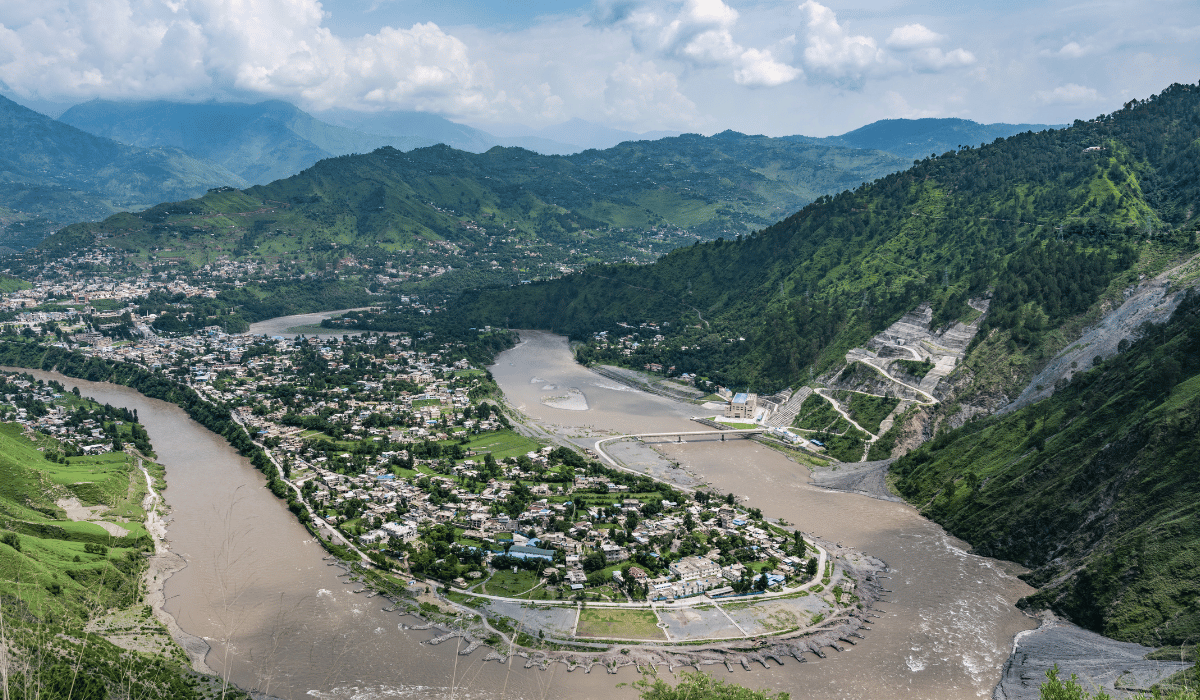Muzaffarabad is the capital city of Azad Jammu and Kashmir in Pakistan. It it is located on the banks of the Jhelum River. The Jhelum River is the largest river that flows through Muzaffarabad, and it is also one of the major rivers in Pakistan. If you want to know in detail about how many rivers in Muzaffarabad then we have to learn more about it.
Apart from the Jhelum River, there are several other smaller rivers that flow through Muzaffarabad. Some of these rivers include the Neelum River, Kunhar River, and Poonch River. The Neelum River is a tributary of the Jhelum River and is located in the Neelum Valley.
The Kunhar River originates from the Kaghan Valley and joins the Jhelum River near the city of Muzaffarabad. The Poonch River is another tributary of the Jhelum River and flows through the Poonch District before joining the Jhelum River in Azad Jammu and Kashmir.
How many rivers are there in Azad Jammu Kashmir?
Azad Jammu and Kashmir (AJK) is a region located in the northern part of Pakistan, and it is home to several rivers. The region is surrounded by the Himalayas, and the rivers that flow through AJK originate from the mountains and flow down to the plains.
Here is a detailed guide on the major rivers that flow through Azad Jammu and Kashmir:
Jhelum River:
The Jhelum River is the largest river that flows through AJK. It originates from the Himalayas and flows through Muzaffarabad, the capital city of AJK, before joining the Chenab River in Punjab, Pakistan.
Neelum River:
The Neelum River is a tributary of the Jhelum River and is one of the most famous rivers in AJK. It originates from the Indian-administered Kashmir and flows through the Neelum Valley before joining the Jhelum River in Muzaffarabad.
Poonch River:
The Poonch River is another tributary of the Jhelum River, and it flows through the Poonch District of AJK before joining the Jhelum River in Azad Jammu and Kashmir.
Kunhar River:
The Kunhar River originates from the Kaghan Valley in the Himalayas and flows through the Mansehra District of Khyber Pakhtunkhwa province before entering AJK. The river then flows through the Neelum Valley before joining the Jhelum River near the city of Muzaffarabad.
Leepa River:
The Leepa River is another important river in AJK, and it originates from the Pir Panjal Range in Indian-administered Kashmir. The river flows through the Leepa Valley before joining the Jhelum River in Muzaffarabad.
Apart from these rivers, there are several other smaller rivers and streams that flow through Azad Jammu and Kashmir. These rivers not only provide a source of water for the region but also add to the natural beauty and tourism potential of the area.
Which two rivers meet at Muzaffarabad?
The Jhelum River and the Neelum River meet at Muzaffarabad in Azad Jammu and Kashmir, Pakistan. The Neelum River is a tributary of the Jhelum River, and it joins the Jhelum River in Muzaffarabad. Together, these two rivers provide a source of water for the city and contribute to its natural beauty and tourism potential.
Which is the largest river in Kashmir?
The Jhelum River is the largest river in Kashmir. It originates from the Himalayas and flows through Indian-administered Kashmir and Azad Jammu and Kashmir in Pakistan. Before joining the Chenab River in Punjab, Pakistan. The Jhelum River is a significant source of water for the region. It is also important for transportation and hydroelectric power generation. The river is also known for its scenic beauty and attracts a large number of tourists every year.
Muzaffarabad Weather
The weather in Muzaffarabad varies depending on the season. During the summer months (June to August), the temperature ranges from 20°C to 30°C (68°F to 86°F) with occasional rain showers. In the winter months (December to February), the temperature drops significantly, and it can go below freezing.
The average temperature during winter is around 5°C (41°F), and snowfall is common in the higher elevations. Spring and autumn are relatively mild, with temperatures ranging from 15°C to 25°C (59°F to 77°F). Overall, Muzaffarabad has a moderate climate throughout the year, making it a pleasant destination for tourists.
Conclusion
Muzaffarabad, the capital city of Azad Jammu and Kashmir in Pakistan, is located on the banks of the Jhelum River. Apart from the Jhelum River, there are several other smaller rivers that flow through Muzaffarabad, including the Neelum River, Kunhar River, and Poonch River. These rivers originate from the Himalayas and flow through the region. And it providing a source of water for the city and contributing to its natural beauty and tourism potential.
FAQs
How Many Rivers in Muzaffarabad?
Muzaffarabad has several rivers, including Jhelum, Neelum, Kunhar, and Poonch rivers.





